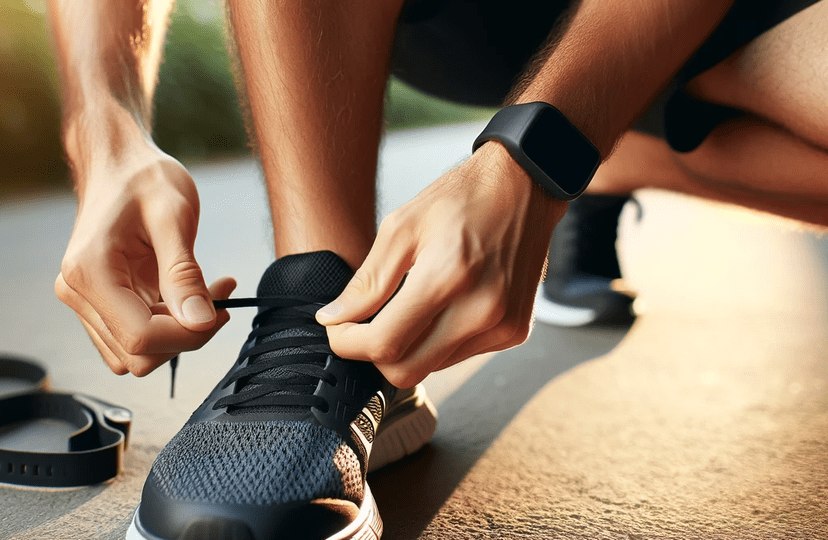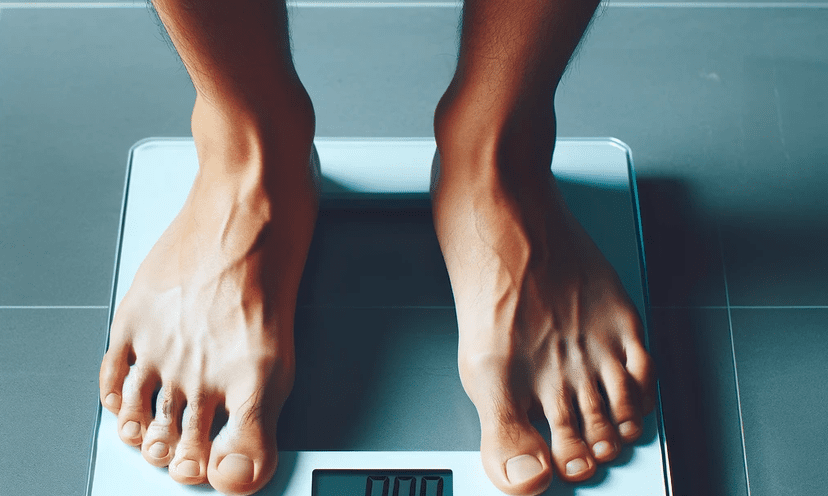How to lose weight when you are very unfit and can't afford the gym?

Starting with the Basics of Weight Loss
Embarking on a weight loss journey when you're unfit and don't have gym access might seem daunting. But it is crucial to remember that weight loss centers on preventive healthcare and isn't solely about hitting the gym.
If you are unfit and can't afford a gym membership, your weight loss journey will be based on a combination of a consistent, nutritionally balanced diet and incorporating physical activity into your daily routine as much as possible. These actions may not seem related to weight loss initially, however, science shows that these are foundational aspects of achieving long-term, sustainable fitness goals.
Understanding Calorie Deficit
The first concept to grasp in your weight loss journey is the principle of calorie deficit. Simply put, a calorie deficit occurs when you burn more calories than you ingest. The body then uses the stored fat as an energy source, leading to weight loss.
On average, the human body needs 2000-2500 calories a day to maintain the current weight. By decreasing calorie intake by 500-1000 calories per day, it's estimated you can lose about 0.5-1 kg (1-2 lbs) a week.
However, it is essential to prioritize gradual calorie reduction without resulting in a state of nutritional deprivation. Dipping too low in calories could lead to negative side effects, such as fatigue, nutritional deficiencies, or a decrease in metabolism.
Importance of Nutritional Balance
While a caloric deficit is key, achieving nutritional balance is equally critical to a successful weight loss plan. Exclusively focusing on cutting calories rather than considering the nutritional quality of the foods you eat might slow down your progress and is not recommended for healthy weight loss.
Balanced nutrition involves incorporating a variety of food from all food groups - fruits, vegetables, grains, dairy and proteins - into your diet. It implies getting the right amount of nutrients to function correctly, which is vital for managing weight and overall health.
To achieve nutritional balance:
- Include foods rich in lean protein like chicken, tofu, and fish in your meals. Proteins help build muscle and maintain satiety.
- Opt for whole grains over refined grains.
- Consume a broad range of fruits and vegetables for a powerful dose of vitamins, fibers, and other essential nutrients.
- Limit intake of saturated fats, added sugars, and sodium.
An excellent way to start might be to substitute high-calorie food items in your diet with healthier, filling, lower-calorie alternatives, leading to weight loss over time.
Setting Achievable Fitness Goals
Fitness isn't just about rigorous gym routines. For those beginning their fitness journey, especially without a gym, it is crucial to set realistic and achievable fitness goals.
Setting unrealistic fitness expectations might lead to disappointment and ultimately derail your weight loss plan. Therefore, create small, measurable, and attainable fitness goals. It could range from walking for 30 minutes daily, doing a set of physical exercises, or even taking the stairs instead of an elevator.
It is important to find a physical activity that you enjoy. This means you'll be more likely to consistently include this in your routine, increasing the overall likelihood of achieving your fitness goals. Make sure to gradually increase intensity and frequency as your fitness levels improve.
Remember that each body responds differently to diet and exercise, and weight loss may be faster or slower for different individuals. So, instead of comparing your progress to others, try focusing on small improvements and win over time. Consistency is key when it comes to weight loss. Slow, steady, and sustainable is the way to go!
Effective No-Gym Workouts
When it comes to the pursuit of healthy weight loss, it's essential to maintain a balance between a well-adjusted diet and regular exercise. However, many people are facing a common barrier when it comes to regular workouts - the lack of access to a gym or expensive equipment. A misconception exists, that for an effective workout, one must resort to a gym or high-cost fitness resources. This misconception leads many to skip exercise altogether when, in fact, numerous affordable and effective, no-gym alternatives exist.
The exercises we will be discussing below can be performed without specialized equipment, pleasing to those with a tight budget. These exercises take advantage of the weight and resistance of your own body and the natural surroundings available to you, which are more than enough for a beginner or even a moderately fit individual. The key factor that makes these techniques effective is consistency, so it's important to make them a regular part of your lifestyle.
Bodyweight Exercises For Beginners
Bodyweight exercises refer to workouts that utilize the weight of one's own body to provide resistance against gravity. They are an excellent way to get started with strength training and improving overall fitness if you lack access to a gym or expensive equipment.
For beginners, it is recommendable to start with more straightforward bodyweight exercises such as:
- Squats: A comprehensive lower body exercise that primarily targets your thighs and buttocks.
- Push-ups: A fantastic upper body exercise that works out your chest, shoulders, and triceps.
- Lunges: Another potent lower body exercise that targets your hips, glutes, quads, hamstrings, and the hard-to-reach muscles of your inner thighs.
Remember, proper form is essential to prevent injuries. There are many online guides and videos available that can provide correct techniques and routines for these exercises.
Utilizing Outdoor Spaces
Open air environments are not only free of cost, but they also have the potential to cater to a multitude of fitness levels and workout styles. These surroundings can significantly vary, from plain sidewalks and local parks to challenging hilly terrains.
For individuals who find high-intensity workouts intimidating or impracticable, a simple brisk walk or a gentle jogging session can serve as a suitable alternative. If you wish to take things to another level, running and cycling on a hilly path can be an enormous cardio boost and muscle strengthener.
Incorporating Daily Movement
Incorporating regular movement into your daily routine can contribute to your fitness and weight loss efforts without feeling like a structured exercise program. You can transform mundane tasks into an opportunity for exercise.
For example, opt for stairs instead of elevators whenever possible. It's an excellent cardio and strength-building exercise. Also, consider walking or cycling for short-distance travels instead of using a vehicle.
Another effective method is organizing your workspace to encourage movement. A standing desk or a high table can force you to spend more time on your feet.
By altering your routine to involve more physical activity, you integrate exercise into your lifestyle, making it more sustainable in the long run.
In conclusion, losing weight and improving fitness without a gym membership is indeed achievable. What's important is maintaining consistency in your chosen routine and gradually increasing the intensity as your fitness level improves. As a guiding principle, remember that exercise is a celebration of what your body can do, not a punishment for what you ate.
Lifestyle Changes for Sustainable Weight Loss
Embarking on a journey towards weight loss and a healthier lifestyle calls for an all-encompassing approach that goes beyond exercise. Long-term, sustainable weight loss is a result of a consistent commitment to healthy eating, improved sleep habits, stress management, and fostering a strong support system.
Improving Sleep and Managing Stress
Sleep doesn't just revitalize our bodies, but it’s pivotal in maintaining the hormonal balance, cortisol being one of them, which is responsible for our body’s stress management. When we fail to get sufficient sleep, our cortisol levels rise subsequently increasing our stress levels. This stress often results in overeating, further impeding weight loss.
Establishing a healthy sleep routine is your first step towards sustainable weight loss. Aim for 7-9 hours of quality sleep every night. Make sure to create a quiet, intimate sleep environment. After the sun sets, dim your house lights, avoid electronic screens, and take some time to wind down before you sleep.
For stress management, mindful practices like yoga, meditation, and deep breathing exercises can be helpful. If stress becomes too overwhelming, don't hesitate to reach a counselor or a health professional.
Healthy Eating on a Budget
A crucial factor in weight loss is a balanced diet but there is a common misconception that eating healthy is expensive. By planning and making smart choices, it’s possible to eat nutritious meals without breaking the bank.
- Invest in whole foods over processed ones. Fresh fruits, vegetables, grains, meat, and dairy are often cheaper and have more nutrients than their processed counterparts.
- Prepare your meals: It gives you control over your portion sizes and the ingredients used.
- Buy fruits and vegetables that are in-season. They are generally cheaper.
- Make use of frozen fruits and vegetables. They have nearly the same nutrient content as fresh ones and are less expensive.
Building a Support System
Maintaining motivation when you begin your fitness journey can be challenging, which is why a solid support system is pivotal. Start by sharing your goals with family and friends. Let them know why it’s significant to you and how they can aid you in this process.
You may also want to consider joining online communities and forums where you can find like-minded individuals striving for similar goals, providing encouraging conversations and support, particularly during tough moments. Remember, sustainable weight loss is a marathon, not a sprint, and every step forward, no matter how small, is a victory. Encouragement from your support system could be the fuel that keeps you going.
When you focus on these holistic lifestyle changes, weight loss becomes a by-product of your healthier life rather than the primary goal. With perseverance and a little patience, these sustainable habits will pave your way to a fitter and healthier lifestyle.
In Summary
In this comprehensive guide, we've broken down the seemingly daunting task of weight loss without gym access into understandable concepts and action steps. We started with understanding the basic principles, such as the importance of maintaining a calorie deficit and achieving nutritional balance in your diet. We also covered the significance of setting realistic and attainable fitness goals to foster a positive mindset towards weight management.
We then delved into effective no-gym workout options, such as bodyweight exercises, utilizing outdoor spaces, and incorporating more movement into your daily routine. Lastly, we highlighted the role of improving sleep, managing stress, the art of healthy eating on a budget, and the imperative support system as part of sustainable weight loss.
Now, to transform these concepts into action, implement the following steps:
-
Determine your calorific needs and adjust your intake to create a deficit that allows weight loss at a safe rate of 0.5-1 kg (1-2 lbs) a week.
-
Prioritize a balanced and nutritious diet. This includes incorporating lean proteins, whole grains, a broad range of fruits and vegetables while limiting intake of saturated fats, added sugars, and sodium.
-
Incorporate simple but consistent physical activity into your daily routine that suits your fitness levels and preference.
-
Set up achievable and measurable fitness goals, such as walking for 30 minutes daily or taking the stairs.
-
Try bodyweight exercises like squats, push-ups, and lunges to build strength.
-
Utilize the outdoors for your workouts. This could be a brisk walk, a jog, or cycling.
-
Incorporate more movement into your daily tasks —spend more time on your feet, use stairs instead of elevators, or use a standing desk.
-
Improve your sleep schedule and manage stress— Aim for 7-9 hours of quality sleep, practice mindful activities, and seek professional help when needed.
-
Plan your meals and make smart choices— Invest in whole foods, prepare your own meals, and utilize in-season and frozen fruits and vegetables.
-
Establish a support system— Share your goals with your family and friends, or join online communities for support and motivation.
Adopting these changes in your lifestyle can lead to effective and sustainable weight loss even without a gym membership. Remember, the goal is long-term health, and every small step counts. Weight loss is not a punishment, but a celebration of what your body can achieve with consistency, patience, and a little effort. On your journey, focus on progress, not perfection. This mentally balanced approach will lead to an overall healthier lifestyle.
![Does a 400 and 600 Calorie Diet Plan Help Weight Loss?[ANSWERED]](https://img.imageboss.me/onestep/width/828/format:auto,quality:80/assets/site/blog/does-a-400-and-600-calorie-diet-plan-help-weight-loss.png)
![How Many Calories Does 10,000 Steps Burn? [ANSWERED]](https://img.imageboss.me/onestep/width/828/format:auto,quality:80/assets/site/blog/how-many-calories-does-10000-steps-burn.png)









